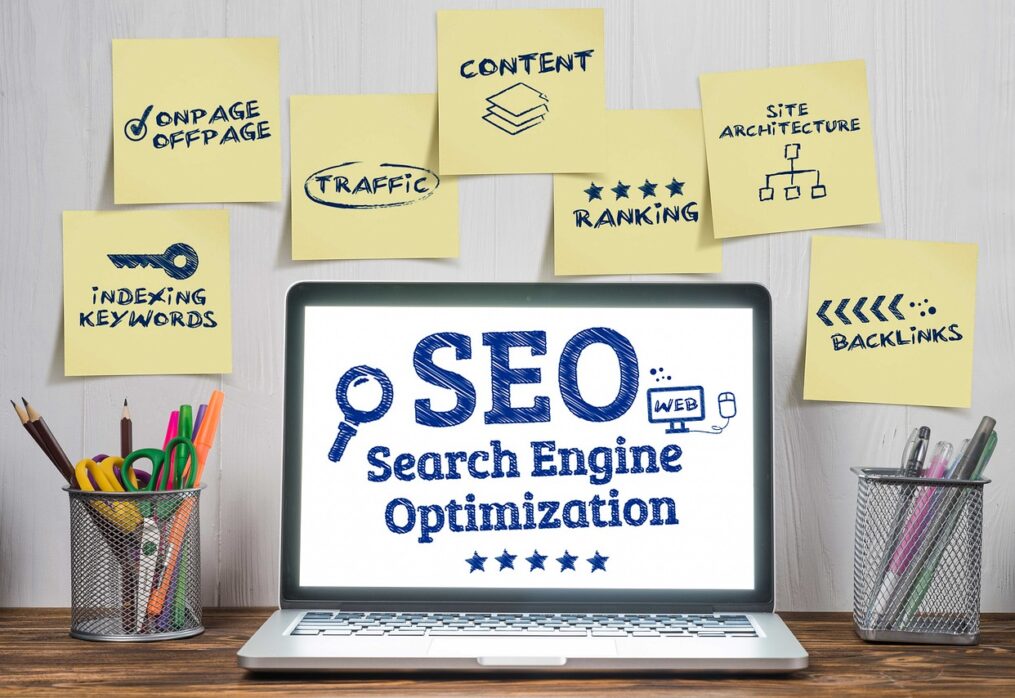What is seo?
Do you want your website to stand out in search results and attract more visitors? If so, SEO (Search Engine Optimization) might be the key to achieving this goal. But what exactly is SEO, and why should you care?
Simply put, SEO is the process of improving your website’s visibility on search engines like Google, making it easier for people to find you when they search for topics related to your business.
Imagine you’re trying to find a product, service, or even a solution to a problem. What do you do? Most likely, you go to a search engine and type in a query. If your website isn’t properly optimised, it could be buried under pages of search results, making it almost impossible for users to discover you.
That’s where SEO comes in. By optimising your content, structure, and technical aspects, you increase your chances of ranking higher on search engine results pages (SERPs), making your site more likely to be clicked on by potential customers.
Are you ready to understand how SEO works, why it’s important, and how you can start implementing it for your website? Let’s get started.

What does seo mean?
SEO, or search engine optimization, refers to the process of improving a website to rank higher in search engine results.
It involves a combination of strategies that aim to make your website more visible to users who are searching for information related to your products or services.
SEO focuses on both the content and the structure of a website to ensure search engines like Google, Bing, and Yahoo easily understand it.

Purpose of SEO in Digital Marketing
The primary goal of SEO in Digital Marketing is to drive more organic traffic to a website. By optimising for search engines, businesses can increase their chances of appearing at the top of search results when potential customers search for relevant keywords.
How Does SEO Work?
Key Elements of SEO
SEO is made up of several essential factors that help a website rank well. These elements include keywords, site structure, content quality, user experience, and backlinks.
Keywords help connect your content to what users are searching for. Your site’s structure should be easy for both users and search engines to navigate.
Quality content is essential because search engines prioritise pages that provide value to the reader. Backlinks, or links from other websites, signal that your content is trustworthy and relevant.


On-Page vs. Off-Page SEO
- On-page SEO focuses on improving elements on your website. This includes optimising titles, headers, images, and URLs to ensure search engines can easily index your content.
- Off-page SEO involves actions taken outside of your website, such as building backlinks from reputable sources, increasing social media mentions, and improving brand reputation. Both are important for a balanced SEO strategy.
Importance of Search Engine Algorithms
Search engine algorithms are the rules that decide how websites are ranked. These algorithms consider many factors, including relevance, authority, and user experience.
The algorithms are constantly updated to improve the quality of search results. Staying updated on these changes is essential for maintaining or improving your rankings.

Why is SEO Important?
Boosting Website Visibility:
SEO plays a crucial role in helping your website appear on search engine results pages (SERPs).
When your site ranks higher, more people can find it. This increased visibility makes it easier for potential customers or readers to discover what you offer without SEO, your website could stay buried in search results, limiting its reach.
Gaining Organic Traffic:
With the proper SEO practices, your website can attract organic traffic, meaning visitors who find your site through unpaid search results.
Organic traffic is valuable because it’s more sustainable over time compared to paid ads.
By optimising content with relevant keywords and offering value, your website can rank higher and consistently bring in visitors without ongoing advertising costs.
Improving User Experience:
A website that is easy to use and provides relevant, well-organised content is more likely to rank well.
Good SEO practices, such as fast loading times, mobile-friendliness, and straightforward navigation, improve the user experience.
The better the experience, the more likely visitors are to stay longer, engage with your content, and return in the future.
This can also positively impact your rankings, as search engines value sites that prioritise user satisfaction.
Key Elements of SEO
Keyword Research:
Keyword research is the process of finding the words and phrases people use when searching for products, services, or information online.
These keywords help guide your content creation to ensure you are targeting the right audience. By selecting the most relevant keywords, you improve your chances of ranking on search engine results pages, making it easier for people to find your content.
Content Optimization:
Content optimization involves tailoring your website’s content to be both valuable to users and friendly for search engines.
This means using keywords naturally in headings, paragraphs, and metadata while keeping the content engaging and informative.
It also includes adjusting things like page titles, descriptions, and image alt text to better align with what people are searching for.
Link Building:
Link building is the process of getting other websites to link back to your content.
Quality backlinks are one of the top factors that search engines use to determine a website’s trustworthiness and authority.
Gaining relevant, high-quality links from other reputable websites can boost your rankings and increase the likelihood that a larger audience sees your content.
Technical SEO:
Technical SEO focuses on the behind-the-scenes aspects of a website that help search engines crawl and index it efficiently.
This includes optimising site speed, ensuring mobile-friendliness, and organising your site’s structure.
A site that loads quickly and is easy to navigate on all devices provides a better user experience and is more likely to rank higher on search engine results pages.
Misconceptions about SEO
One common misconception is that SEO results appear overnight. Once the right keywords are in place, high rankings will follow immediately.
The reality is that SEO takes time. It requires ongoing effort, monitoring, and adjustments to see meaningful results truly.
Another myth is that SEO only involves using the right keywords. While keywords are important, other factors like quality content, website design, and user experience play an essential role in ranking higher on search engines.
Some people also believe that once a page ranks well, there’s no need to update or optimise it further.
Search engine algorithms and user behaviour are constantly changing, so it’s essential to refresh and improve your content regularly to stay competitive.
Understanding Realistic Expectations
SEO is a long-term strategy. You won’t see instant changes. It can take weeks or even months before ranking improvements are noticeable. It’s crucial to stay patient and consistent rather than expecting immediate results.
Additionally, not every page can rank at the top. Many factors influence rankings, including the competition for keywords and the overall authority of your site.
It’s essential to set realistic goals and focus on gradual improvements over time.
How to Get Started with SEO
Setting SEO Goals:
Start by determining what you want to achieve. Are you trying to get more traffic, improve rankings, or boost sales? Be specific about what success looks like for your website.
For example, you could aim for a certain number of visitors per month or a higher ranking for a key search term. Break your goals into smaller tasks, and track your progress over time.
Choosing the Right Tools for SEO:
There are many SEO tools available, both free and paid. Some popular tools help with keyword research, tracking website performance, and analysing your competition.
Choose tools that match your goals. For example, Google Analytics and Google Search Console are free and help monitor website performance, while paid options like SEMrush or Ahrefs offer in-depth keyword analysis and competitor insights.
Essential Steps for Optimising Your Website:
Start with keyword research. Find the terms that your audience is searching for.
Once you have your keywords, incorporate them naturally into your content, titles, and meta descriptions.
Next, focus on creating high-quality content that answers your audience’s questions. Make sure your website is easy to use, loads quickly, and works well on mobile devices.
Lastly, ensure that your website is technically sound by checking its loading speed and fixing any broken links. These simple steps can set the foundation for a successful SEO strategy.
How to Measure SEO Success
Key Performance Indicators (KPIs)
To measure SEO success, track vital metrics that show if your website is improving. Key performance indicators (KPIs) include:
Tools for Tracking SEO Progress
To track these KPIs, use SEO tools that give detailed reports on your website’s performance. Some helpful tools include:
By regularly checking these KPIs and using the right tools, you can track SEO progress and make necessary adjustments to improve your site’s performance.
Conclusion
As we wrap up, it’s clear that SEO plays a pivotal role in growing your online presence and driving meaningful traffic to your website. It’s not just about attracting any visitors, but the right ones—people who are genuinely interested in your content, products, or services.
By focusing on key areas like keyword research, content optimization, and improving your site’s performance, you can gradually improve your rankings and create a better experience for your users.
With the right SEO strategies in place, you can increase your website’s visibility, attract more organic traffic, and create a more enjoyable experience for your audience.
Is it time to take your SEO strategy to the next level? The possibilities are within reach if you stay committed and focused on the areas that matter most. Keep improving, keep testing, and most importantly, keep putting your users first.








